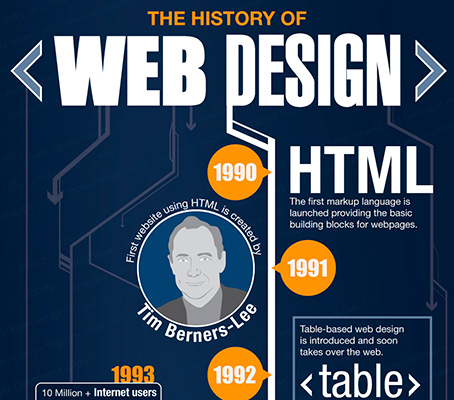Join Us As We Embark On A Journey Through Time, Discovering The Development Of Site Layout And How It Has Actually Affected The Electronic Landscape
Join Us As We Embark On A Journey Through Time, Discovering The Development Of Site Layout And How It Has Actually Affected The Electronic Landscape
Blog Article
Personnel Author-Asmussen Vangsgaard
In the past, web sites were simple and concentrated on info. Navigation was direct, and design was for desktops. Currently, user experience is crucial. https://performancein.com/news/2022/02/21/a-new-strategy-for-attribution-in-the-privacy-first-internet/ overviews layouts for very easy navigating. Receptive layouts fit different gadgets. Today, dark mode lowers pressure, and minimal food selections enhance navigation. Interactive features engage users, and vibrant visuals stick out. AI integration enhances engagement. See exactly how style has advanced to improve your online journey.
Early Days of Web Design
In the very early days of website design, simplicity preponderated. Websites were fundamental, with restricted colors, typefaces, and formats. The focus got on providing info instead of showy visuals. Customers accessed the internet through sluggish dial-up connections, so rate and performance were vital.
Navigating food selections were straightforward, commonly located at the top or side of the page. Internet sites were created for home computer, as mobile surfing wasn't yet widespread. Web content was king, and designers focused on simple readability over intricate layout components.
HTML was the key coding language used, and developers needed to function within its restrictions. Computer animations and interactive features were marginal compared to today's requirements. Websites were fixed, with little vibrant content or individualized customer experiences.
Increase of User-Focused Layout
With the advancement of website design, a shift in the direction of user-focused style principles has actually come to be significantly famous. Today, developing sites that prioritize individual experience is vital for involving site visitors and accomplishing organization goals. User-focused design involves understanding the needs, preferences, and behaviors of your target audience to tailor the website's design, web content, and includes appropriately.
Designers now carry out comprehensive study, such as user studies and usability testing, to collect understandings and responses directly from users. This data-driven strategy helps in developing user-friendly navigation, clear calls-to-action, and visually attractive interfaces that reverberate with visitors. By positioning the customer at the facility of the design process, websites can provide a more tailored and delightful experience.
Responsive layout has actually additionally become a vital aspect of user-focused design, making sure that internet sites are optimized for various tools and display dimensions. This adaptability enhances access and functionality, dealing with the varied ways users connect with sites today. Basically, the surge of user-focused design symbolizes a change in the direction of producing digital experiences that focus on the demands and expectations of completion individual.
Modern Trends in Web Design
Check out the current fads shaping website design today. One popular fad is dark setting design, providing a sleek and modern appearance while reducing eye pressure in low-light atmospheres. Another essential pattern is minimalist navigation, simplifying food selections and boosting user experience by focusing on essential elements. Including micro-interactions, such as animated buttons or scrolling effects, can develop an extra engaging and interactive internet site. Responsive layout continues to be essential, ensuring seamless user experiences throughout various gadgets. Furthermore, making use of bold typography and unbalanced formats can include visual interest and draw attention to specific material.
Integrating AI technology, like chatbots for client support or personalized suggestions, enhances individual engagement and simplifies processes. Ease of access has likewise come to be a substantial trend, with developers prioritizing inclusive style techniques to satisfy varied individual demands. Accepting sustainability by optimizing web site efficiency for rate and efficiency is one more arising fad in website design. Collaborating with user feedback and data analytics to repeat and enhance style continuously is important for remaining relevant in the ever-evolving electronic landscape. By embracing Related Site , you can create an aesthetically enticing, straightforward site that reverberates with your audience.
Conclusion
As you reflect on the advancement of site layout from the very early days to currently, you can see how user-focused design has ended up being the driving force behind modern trends.
Welcome the journey of modification and adjustment in website design, always maintaining the individual experience at the forefront.
Keep present with the latest fads and technologies, and never ever quit evolving your approach to develop visually sensational and easy to use websites.
Develop, adapt, and create - the future of web design is in your hands.
